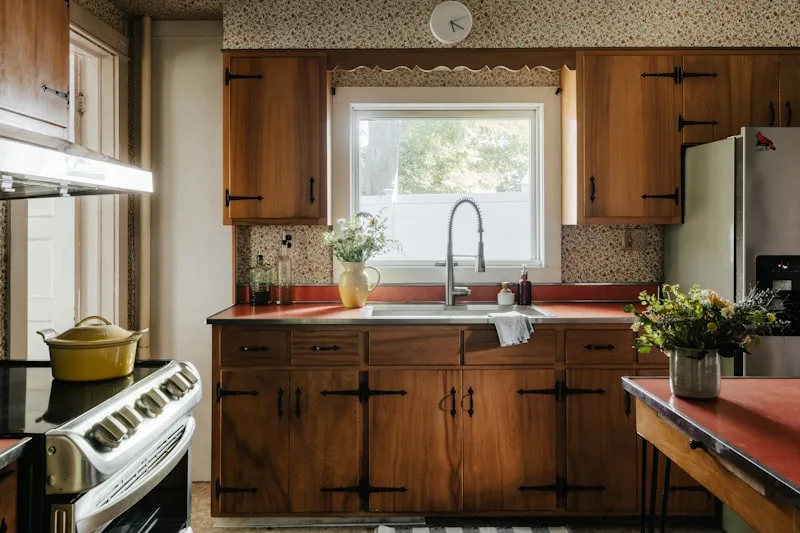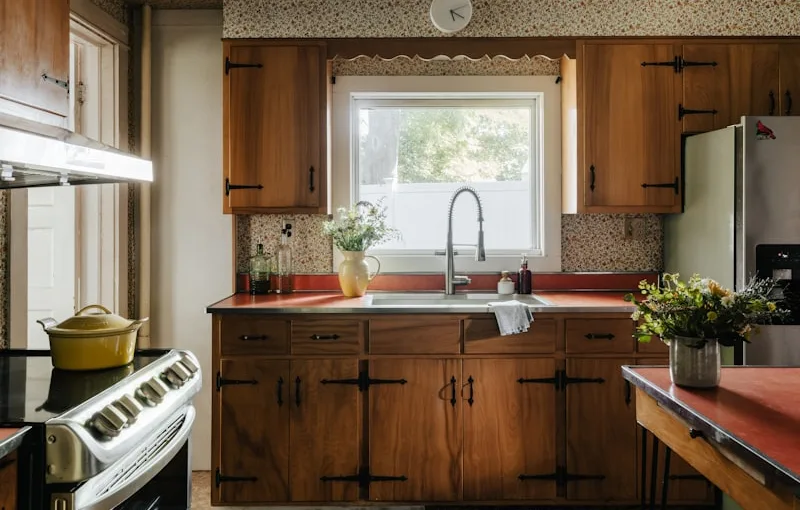But let’s dive a little deeper—pun intended! If you think about it, the depth of your cabinets can really shape your cooking experience. Imagine reaching for that heavy Dutch oven in a cabinet that’s too deep. You might feel like you’re on a treasure hunt, digging through layers of kitchenware. Not fun, right? On the flip side, if your cabinets are too shallow, you might find yourself cramming items in, which can lead to chaos.
Now, if you’re considering custom cabinets, you have the freedom to play around with depth. Some homeowners opt for deeper cabinets, around 30 inches, especially if they have larger kitchens and want to maximize storage. It’s like having a spacious closet instead of a cramped one—everything has its place, and you can actually see what you have!
Also, don’t forget about the countertop overhang. If you’re planning to have a breakfast bar or an overhang for seating, you’ll want to factor that into your cabinet depth. It’s all about creating a flow in your kitchen that feels just right. So, when you’re mapping out your kitchen layout, keep that depth in mind—it’s a small detail that can make a big difference in your cooking adventures!
Unlocking Kitchen Design: The Essential Depth of Base Cabinets Explained
Imagine trying to cook a gourmet meal in a kitchen where everything is out of reach. Frustrating, right? That’s where the depth of your base cabinets comes into play. Typically, base cabinets are around 24 inches deep, which is perfect for accommodating standard-sized appliances and providing ample storage. But what if you want to maximize your space? Going deeper can offer more room for larger items, like those bulky mixing bowls or that fancy stand mixer you only use for special occasions.
Now, let’s talk about accessibility. Have you ever struggled to reach the back of a cabinet? It’s like a game of hide and seek, but you always lose! A deeper cabinet can help you avoid that headache. With pull-out shelves or lazy Susans, you can easily access everything without having to play contortionist. Plus, deeper cabinets can create a more streamlined look, making your kitchen feel more spacious and organized.
But it’s not just about practicality; it’s also about aesthetics. The depth of your base cabinets can influence the overall design of your kitchen. A deeper cabinet can create a bold statement, giving your kitchen a modern edge. Think of it as the difference between a sleek sports car and a compact sedan—both get you where you need to go, but one definitely turns heads!

So, whether you’re a culinary wizard or just someone who enjoys a good takeout, understanding the depth of base cabinets is key to unlocking the full potential of your kitchen design.
Beyond Aesthetics: Why the Depth of Your Kitchen Base Cabinet Matters
Imagine opening your cabinet doors and finding a treasure trove of organized pots, pans, and spices. That’s the magic of having the right cabinet depth. If your cabinets are too shallow, you might find yourself playing a frustrating game of Tetris every time you try to store or retrieve something. On the flip side, deeper cabinets can offer you ample storage space, making it easier to keep your kitchen tidy and functional. It’s like having a secret compartment in your home where everything has its place!
But wait, there’s more! The depth of your cabinets can also impact your workflow. Picture this: you’re in the middle of cooking a delicious meal, and you need to grab a mixing bowl. If your cabinets are too deep, you might have to dig through a mountain of kitchenware, wasting precious time. A well-thought-out cabinet depth can streamline your cooking process, making it feel like a breeze rather than a chore.
The Perfect Fit: How Deep Should Your Kitchen Base Cabinets Really Be?
Typically, standard kitchen base cabinets are about 24 inches deep. This depth strikes a balance, allowing for ample storage while keeping everything within easy reach. Imagine trying to find that elusive spice jar at the back of a cabinet that’s 30 inches deep—talk about a game of hide and seek!
But let’s not forget about your personal cooking style. If you’re a culinary wizard who loves to whip up gourmet meals, you might want to consider deeper cabinets. A depth of 27 inches can give you extra space for larger pots and pans, making it easier to organize your kitchen like a pro. Think of it as upgrading from a compact car to a spacious SUV—more room means more possibilities!
On the flip side, if you’re working with a smaller kitchen, you might want to stick with the standard depth. Shallow cabinets can help create an illusion of space, making your kitchen feel larger and more open. It’s like wearing vertical stripes instead of horizontal ones—subtle, but effective!
Ultimately, the perfect fit for your kitchen base cabinets depends on your needs and the layout of your space. So, whether you’re going for standard or a bit deeper, just remember: the right depth can transform your kitchen from a cluttered mess into a well-organized haven.
Kitchen Cabinet Depth Demystified: Finding the Ideal Measurement for Your Space
Standard kitchen cabinets typically come in two depths: 24 inches for base cabinets and 12 inches for wall cabinets. But here’s the kicker—these measurements can vary based on your specific needs and the layout of your kitchen. Imagine trying to fit a square peg in a round hole; that’s what it feels like when your cabinet depth doesn’t align with your kitchen’s flow.
So, how do you find that sweet spot? Start by considering your kitchen’s layout. If you have a galley kitchen, deeper cabinets can provide more storage without crowding the space. On the flip side, if you’re working with a compact area, shallower cabinets can help maintain an open feel. It’s all about balance!
Also, think about what you plan to store. If you’re a culinary wizard with pots and pans galore, you might want to lean towards deeper cabinets. But if you’re more of a minimalist, shallow cabinets could be your best friend.
And let’s not forget about appliances! If you have a bulky fridge or a deep oven, you’ll want your cabinets to complement those dimensions. Picture it like a dance; everything needs to move in harmony.
Ultimately, the ideal cabinet depth is about creating a kitchen that works for you. So, take a moment to measure, visualize, and imagine how each inch can transform your cooking space into a culinary haven.
Frequently Asked Questions
Can I customize the depth of my kitchen base cabinets?
Yes, you can customize the depth of your kitchen base cabinets to better fit your space and storage needs. Many manufacturers offer options for different depths, allowing you to choose a size that maximizes functionality and complements your kitchen layout.
How do I measure for kitchen base cabinet depth?
To measure for kitchen base cabinet depth, use a tape measure to determine the distance from the back wall to the front edge of the cabinet. Standard depth for base cabinets is typically 24 inches, but it’s important to measure your specific space to ensure a proper fit.
What is the standard depth of a kitchen base cabinet?
The typical depth of a kitchen base cabinet is 24 inches. This measurement allows for ample storage space while accommodating standard countertop overhangs and appliances. Adjustments may be made based on specific kitchen designs or personal preferences.
What are the benefits of deeper kitchen base cabinets?
Deeper kitchen base cabinets provide increased storage capacity, allowing for larger pots, pans, and appliances to be stored easily. They enhance accessibility by reducing the need to stack items, making it simpler to find and retrieve kitchen essentials. Additionally, they can improve the overall functionality of the kitchen by maximizing space utilization, leading to a more organized and efficient cooking environment.
How does cabinet depth affect kitchen design?
Cabinet depth plays a crucial role in kitchen design as it influences both functionality and aesthetics. Standard cabinet depths typically range from 12 to 24 inches, affecting storage capacity and ease of access. Deeper cabinets can provide more storage but may require careful planning to ensure they do not overwhelm the space or hinder movement. Additionally, the depth impacts the overall layout, flow, and visual balance of the kitchen, making it essential to consider when designing an efficient and appealing kitchen environment.
